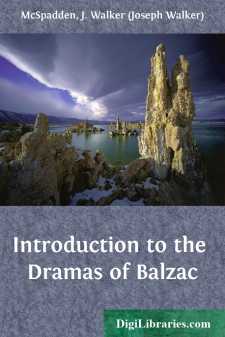Categories
- Antiques & Collectibles 13
- Architecture 36
- Art 48
- Bibles 22
- Biography & Autobiography 816
- Body, Mind & Spirit 145
- Business & Economics 28
- Children's Books 17
- Children's Fiction 14
- Computers 4
- Cooking 94
- Crafts & Hobbies 4
- Drama 346
- Education 58
- Family & Relationships 59
- Fiction 11834
- Foreign Language Study 3
- Games 19
- Gardening 17
- Health & Fitness 34
- History 1378
- House & Home 1
- Humor 147
- Juvenile Fiction 1873
- Juvenile Nonfiction 202
- Language Arts & Disciplines 89
- Law 16
- Literary Collections 686
- Literary Criticism 179
- Mathematics 13
- Medical 41
- Music 40
- Nature 179
- Non-Classifiable 1768
- Performing Arts 7
- Periodicals 1453
- Philosophy 66
- Photography 2
- Poetry 897
- Political Science 203
- Psychology 45
- Reference 154
- Religion 516
- Science 126
- Self-Help 85
- Social Science 82
- Sports & Recreation 34
- Study Aids 3
- Technology & Engineering 59
- Transportation 23
- Travel 463
- True Crime 29
Our website is made possible by displaying online advertisements to our visitors.
Please consider supporting us by disabling your ad blocker.
Introduction to the Dramas of Balzac
Description:
Excerpt
Honore de Balzac is known to the world in general as a novel-writer, a producer of romances, in which begin the reign of realism in French fiction. His Comedie Humaine is a description of French society, as it existed from the time of the Revolution to that of the Restoration. In this series of stories we find the author engaged in analyzing the manners, motives and external life of the French man and woman in all grades of society. When we open these volumes, we enter a gallery of striking and varied pictures, which glow with all the color, chiaroscuro and life-like detail of a Dutch panel. The power of Balzac is unique as a descriptive writer; his knowledge of the female heart is more profound, and covers a far wider range than anything exhibited by a provincial author, such as Richardson. But he has also the marvelous faculty of suggesting spiritual facts in the life and consciousness of his characters, by the picturesque touches with which he brings before us their external surroundings—the towns, streets and houses in which they dwell; the furniture, ornaments and arrangement of their rooms, and the clothes they wear. He depends upon these details for throwing into relief such a portrait as that of Pons or Madame Hulot. He himself was individualized by his knobbed cane abroad, and his Benedictine habit and statuette of Napoleon at home; but every single one of his creations seems to have in some shape or other a cane, a robe or a decorative attribute, which distinguishes each individual, as if by a badge, from every other member of the company in the Comedy of Life.
The art of characterization exhibited by the author fascinates us; we gaze and examine as if we were face to face with real personages, whose passions are laid bare, whose life is traced, whose countenance is portrayed with miraculousness, distinctness and verisimilitude. All the phenomena of life in the camp, the court, the boudoir, the low faubourg, or the country chateau are ranged in order, and catalogued. This is done with relentless audacity, often with a touch of grotesque exaggeration, but always with almost wearying minuteness. Sometimes this great writer finds that a description of actuality fails to give the true spiritual key to a situation, and he overflows into allegory, or Swendenborgian mysticism, just as Bastien-Lepage resorts to a coating of actual gilt, in depicting that radiant light in his Jeanne d'Arc which flat pigment could not adequately represent.
But this very effort of Balzac to attain realistic characterization has resulted in producing what the ordinary reader will look upon as a defect in his stories. When we compared above the stories of this writer to a painting, we had been as near the truth, if we had likened them to a reflection or photograph of a scene. For in a painting, the artist at his own will arranges the light and shade and groups, and combines according to his own fancy the figures and objects which he finds in nature. He represents not what is, but what might be, an actual scene. He aims at a specific effect. To this effect everything is sacrificed, for his work is a synthesis, not a mere analysis. Balzac does not aim at an effect, above and independent of his analysis. His sole effort is to emphasize the facts which his analysis brings to light, and when he has succeeded in this, the sole end he aims at is attained. Thus action is less important in his estimation than impression. His stories are therefore often quite unsymmetrical, even anecdotic, in construction; some of them are mere episodes, in which the action is irrelevant, and sometimes he boldly ends an elaborate romance without any dramatic denouement at all. We believe that Honore de Balzac was the first of European writers to inaugurate the novel without denouement, and to give the world examples of the literary torso whose beauty and charm consist not in its completeness, but in the vigor and life-like animation of the lines, features, and contours of a detached trunk.
It is not surprising, therefore, that when we come to study the dramas of Balzac we find that the very qualities that give effectiveness to a stage representation are wanting in them. For the qualities which make a realistic tale impressive render a play intolerable. Thus Balzac's stage pieces are interesting, exciting and vivid in many passages, but they cannot stand the searching glare of the footlights. Balzac, in the first place, looked upon the drama as a department of literature inferior to that of romance, and somewhat cavalierly condescended to the stage without reckoning on either its possibilities or its limitations....




